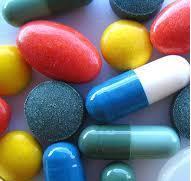
Placebos can heal even though they contain no active ingredients. But is there more at work here than positive thinking? Is belief a catalyst for unlocking the brain's own healing power?
Colours influence the effectiveness of both placebos and genuine medicines. Yellow is the best colour for antidepressants, green is most effective for anxiety, while white is the best for ulcer treatment. Placebos taken four times a day are more effective than those taken two times a day, two capsules are better than one, and big pills are more effective than small ones. Buy yourself a packet of Smarties and try it at home!
Placebos have been known to relieve chronic pain, depression, anxiety, headaches, asthma, sexual dysfunction and irritable bowel syndrome. There are even cases of successful placebo surgery, with osteoarthritis patients who underwent simulated knee surgery just as likely to report pain relief as those who received the real procedure.
Medical ritual and the doctor’s bedside manner seem to be a crucial factor; the placebo effect increases with the number of doctor visits and a longer treatment time. Placebos are extraordinary drugs, says Dr Robert Buckman, a Canadian oncologist.
“They seem to have some effect on almost every symptom known to mankind, and work in at least a third of patients and sometimes in up to 60%. They have no serious side-effects and cannot be given in overdose. In short they hold the prize for the most adaptable, protean, effective, safe and cheap drugs in the world’s pharmacopoeia.”
The placebo reaction was discovered during World War II when an American doctor, Henry Beecher, ran out of pain-killing morphine while treating wounded soldiers. In desperation, he told his patients he was giving them morphine even though it was only saline solution and, to his astonishment, 40% of the soldiers said it eased their pain.
The placebo effect is not deception—the physical changes are real. Placebos have been shown to increase endorphins in patients with chronic pain, asthma patients show less constriction of the bronchial tubes and patients with Parkinson’s disease show significantly increased dopamine release.
So how does it work? The mechanisms are only partially understood but neuroscientists have uncovered some important clues. Placebos seem to help the brain release natural chemicals and change brain activity in ways that mimic the effects of real drugs and treatments.
In pain reduction studies, for example, the mind’s belief seems to trigger the endogenous opioid system which turns off nociceptors, the nerve signals that cause the perception of pain.
"What we need to learn is how taking a placebo affects the brain's processing of symptoms and other sensations related to illness, how it affects output and the activity of your immune system," says Dr. David Spiegel, a Stanford University psychiatrist who studies placebos.
Science writer Dylan Evans explains in his book Placebo: Mind Over Matter in Modern Medicine that motor neurons are not the only way the brain communicates with the body. White blood cells secrete chemicals into the blood stream which act as messengers tracking infection and reporting back to the brain. Certain parts of the brain can return these chemical messengers to white blood cells and this is what is meant, he says, by the power of the mind to heal the body.
Other theories try to explain the effect in terms of psychological reactions such as cognitive and classical conditioning. The brain anticipates an outcome and the anticipation then produces that outcome, or put another way, belief that relief or recovery is coming brings about the recovery itself.
"An awful lot of alternative medicine is a placebo effect and I think a lot of standard medicine is also the placebo effect," says Professor Howard Brody, a bioethicist at Michigan State University and author of The Placebo Response.
Brody believes that the mind works in tandem with the body to enhance healing.
“The placebo response occurs when we receive certain types of signals or messages from the environment around us. These messages work in some fashion, at some level to alter the meaning of our state of health or illness. Perhaps, for example, the old meaning we attributed to our illness was “This is scary, and I don’t know what’s causing it,” while the new meaning is “Now I know this is going to get better.’ Or perhaps the old meaning was “No one cares what happens to me.” Now the meaning becomes, people around me seem really concerned about my health.” Often what makes these signals especially important for us is that they’re tied to important human relationships. Perhaps the message that we’ll get better comes from a physician or alternative healer whom we have come to know and trust over the years. Or the hope is provided by a support group whose members have suffered through the same sorts of problems that we have.”
Professor Ted Kaptchuk at Harvard Medical School believes the placebo effect is actually many effects woven together involving not just neuroscience but the fields of psychology, anthropology and social economics.
“Ultimately, we think the placebo is about the power of the imagination, trust and hope in the medical encounter,” he says.
Dylan Evans prefers to quote the Buddhist scripture The Dhammapada:
“What we are today comes from our thoughts of yesterday, and our present thoughts build our life of tomorrow: our life is the creation of the mind.”
